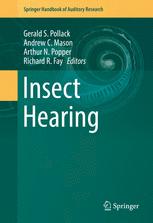

Most ebook files are in PDF format, so you can easily read them using various software such as Foxit Reader or directly on the Google Chrome browser.
Some ebook files are released by publishers in other formats such as .awz, .mobi, .epub, .fb2, etc. You may need to install specific software to read these formats on mobile/PC, such as Calibre.
Please read the tutorial at this link: https://ebookbell.com/faq
We offer FREE conversion to the popular formats you request; however, this may take some time. Therefore, right after payment, please email us, and we will try to provide the service as quickly as possible.
For some exceptional file formats or broken links (if any), please refrain from opening any disputes. Instead, email us first, and we will try to assist within a maximum of 6 hours.
EbookBell Team

5.0
20 reviewsInsect Hearing provides a broadly based view of the functions, mechanisms, and evolution of hearing in insects. With a single exception, the chapters focus on problems of hearing and their solutions, rather than being focused on particular taxa. The exception, hearing in Drosophila, is justified because, due to its ever growing toolbox of genetic and optical techniques, Drosophila is rapidly becoming one of the most important model systems in neurobiology, including the neurobiology of hearing. Auditory systems, whether insectan or vertebrate, must perform a number of basic tasks: capturing mechanical stimuli and transducing these into neural activity, representing the timing and frequency of sound signals, distinguishing between behaviorally relevant signals and other sounds and localizing sound sources. Studying how these are accomplished in insects offers a valuable comparative view that helps to reveal general principles of auditory function.